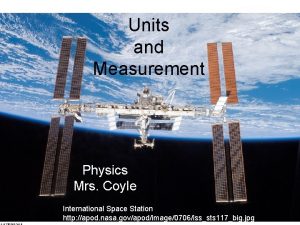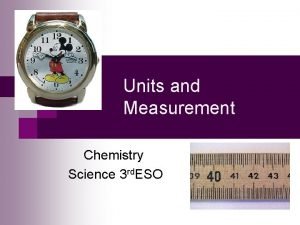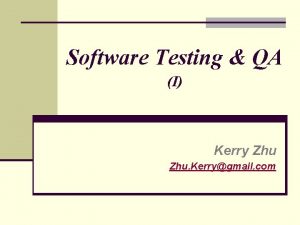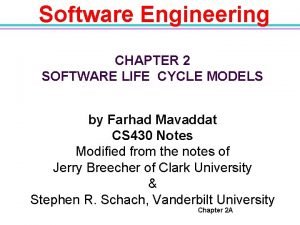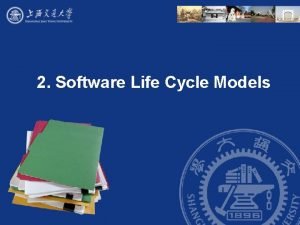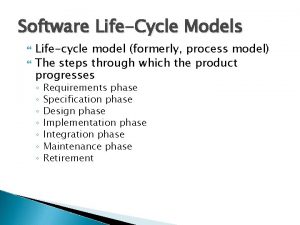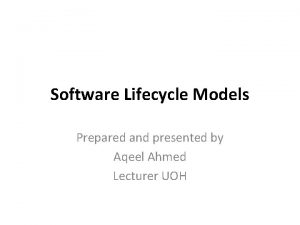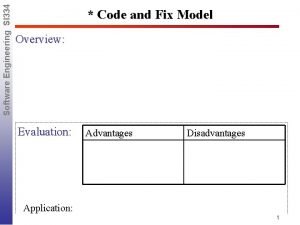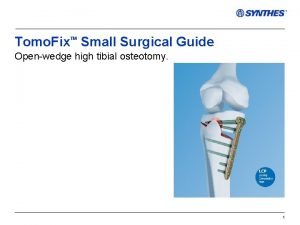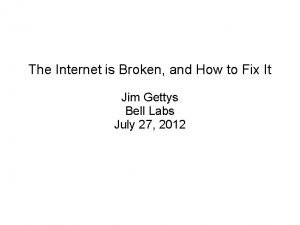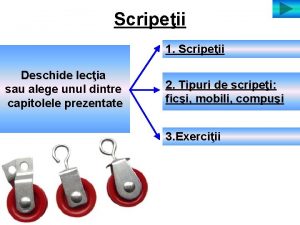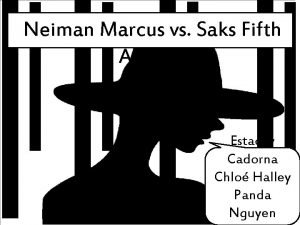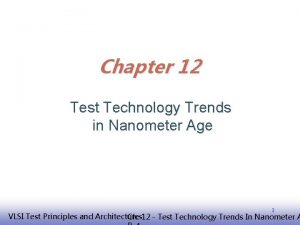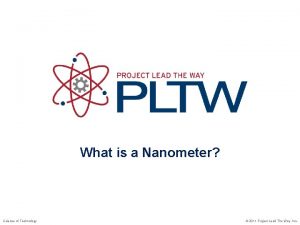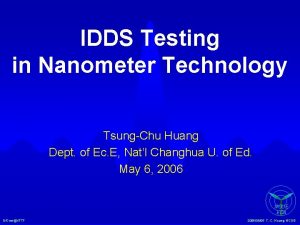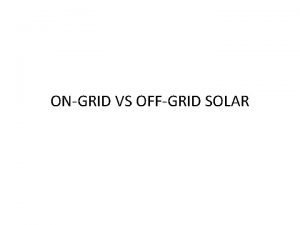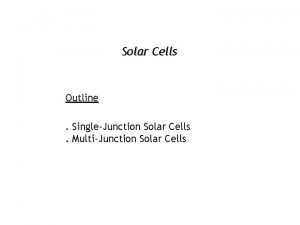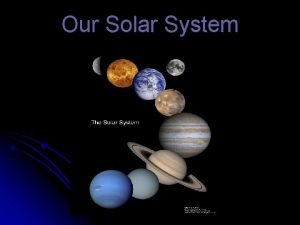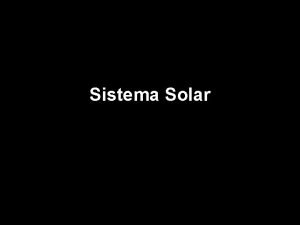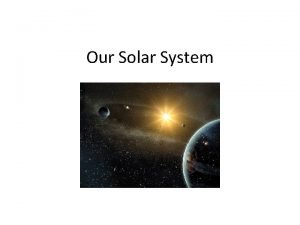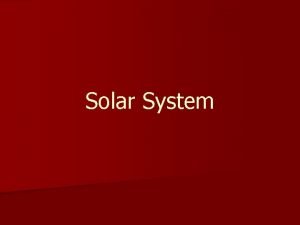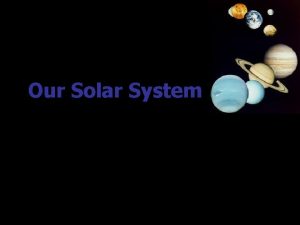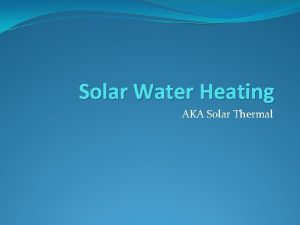Solar explained Nanometer technology and how to fix
























- Slides: 24

Solar explained: Nanometer technology and how to fix it to a roof

Who is Solar. UK ? • SOLAR UK – Consumer division of Magpie Technologies (Research and Development) – Established in 1982, Magpie Technologies developed pioneering IT/Telecoms projects – Migrated into the Solar Thermal industry in 1998 after completing a project for the provision of power and water in the developing world – Undertakes research and development for leading European Solar companies – Designer and Manufacturer of the complete Solar Thermal systems – Supplier and Installer of Domestic, Pool and Commercial Systems for ST & PV – Solar Tracker won the 2001 Euro Solar award – An accredited MCS manufacturer and Installer (LCBP) – Member of the Solar Trade Association (Chairman: Technical Working Group) – La. Zer 2 tested to EN 12975 -1 and shown to have highest yearly output of any tested collector 2

PV – the science Today's most common PV devices use a single junction, or interface, to create an electric field within a semiconductor such as a PV cell. In a single-junction PV cell, only photons whose energy is equal to or greater than the band gap of the cell material can free an electron for an electric circuit. In other words, the photovoltaic response of single-junction cells is limited to the portion of the sun's spectrum whose energy is above the band gap of the absorbing material, and lower-energy photons are not used. One way to get around this limitation is to use two (or more) different cells, with more than one band gap and more than one junction, to generate a voltage. These are referred to as "multijunction" cells (also called "cascade" or "tandem" cells). Multijunction devices can achieve a higher total conversion efficiency because they can convert more of the energy spectrum of light to electricity. As shown below, a multijunction device is a stack of individual single-junction cells in descending order of band gap (Eg). The top cell captures the high-energy photons and passes the rest of the photons on to be absorbed by lower-band-gap cells. Solar cells are made of the same kinds of semiconductor materials, such as silicon, used in the microelectronics industry. For solar cells, a thin semiconductor wafer is specially treated to form an electric field, positive on one side and negative on the other. When light energy strikes the solar cell, electrons are knocked loose from the atoms in the semiconductor material. If electrical conductors are attached to the positive and negative sides, forming an electrical circuit, the electrons can be captured in the form of an electric current -- that is, electricity.

Solar Thermal and Photo Voltaic (PV) • 93% conversion rate 17% conversion rate 4

The Basics The sun gives out an almost unlimited amount of energy; when the sun shines there about 1000 watts of free energy available for every square meter of land. The sunlight landing on the earth’s surface in one hour is equal to all the energy used in the world in one year! In the UK, there is five times more energy in the summer month than in the winter With Solar, you are buying 25 years worth of energy 5

Transfer of Heat – Three Ways: • Conduction - Transfer of heat from one material to another • Convection - Movement of the material to transfer heat • Radiation - Energy emitted from a material (travels in straight lines so k. W/m 2 is fixed) La. Zer 2 Collector - 893 Kwh/m /pa 2 893 Kwh/m /pa 6

Which type is best ? • Depends on target temperature 7

Vacuum tube and flat plate 8

Commercial System Design ST –Sizing: – > 50 l per m 2 – Normally 75 l per m 2 – <= 100 l per m 2 9

If the objective is to obtain 10% of the buildings energy from solar, there is often lack of roof space (after air handling equipment etc is installed) 10

The benefits of Alkorbright Solar. UK has teamed up with Renolit, makers of the Alkorbright roofing membrane for flat roof waterproofing, for a trial showing that its solar panels work 9% more efficiently when installed on this flat roof waterproofing surface. The durable white colour of the Alkorbright membrane maximises the sun’s reflection, cooling the temperature of the building and reducing the cost of air conditioning. The more sunlight that reaches the panels, the more energy you get.

12

Leatherhead Police Federation - CPW • • • Planning requirement for 10% Original proposal supplied 8% By combining high efficiency panels with low frame angel allowed the output to be increased to 12. 4% (same cost) 13

• The addition space on the roof has proved very useful, since there have been some last minute additions to the roof. This sometimes happens. 14

15

16

And if you run out of roof space, there always the walls 17

Virtual Cylinders • By splitting the cylinder into multiple cylinders, each with multiple coils, reduces costs and increase effectiveness • The solar heats the top of the first cylinder to 60 c and then moves onto the next cylinder • Commercial systems are sized to cope with maximum water usage (i. e. are oversized) • If the solar heats 1000 l of water to 60 c, and 1000 l is all that is used that day, the boiler will not fire – a perfect solar system 18

PV – Why Grid Connect ? 19

Roof Fixings

Industrial Installations – G 59

PV rules of thumb • 1 kw = 8 m 2 (May need 16 m 2 if anti-shading) • 1 kw = 950 Kwh per year • 1 kw = £ 5000 installed • 1 kw = 500 Kg C 02 savings • 1 kw = 100 Kg roof weight

The Future • Solar thermal for Hot Water, absorption chillers and the electricity • Both will be required to meet Government targets • The number of companies involved will go up, BUT the true knowledge will go down. 24

Solar. UK www. solaruk. net Geoff Fox 01892 52 63 68 Geoff@Solar. UK. net
 Nanometers symbol
Nanometers symbol Density symbol and unit
Density symbol and unit Triple beam balance si units and symbols
Triple beam balance si units and symbols Lambang nanometer
Lambang nanometer How big is a nanometer
How big is a nanometer 1mm to nanometer
1mm to nanometer Nanometer to millimeter
Nanometer to millimeter Solar cells wholesale
Solar cells wholesale What is an inexhaustible source of energy
What is an inexhaustible source of energy Kerry zhu
Kerry zhu Classification of software metrics
Classification of software metrics Feedback cycle
Feedback cycle Incremental life cycle model
Incremental life cycle model Software lifecycle models
Software lifecycle models Build and fix model
Build and fix model Code-and-fix
Code-and-fix Fix it first remedy
Fix it first remedy Tomo fix
Tomo fix Time tracking course
Time tracking course Internet is broken. how do we
Internet is broken. how do we Sistem de scripeti mobili
Sistem de scripeti mobili Saks fifth avenue neiman marcus
Saks fifth avenue neiman marcus Fix schreibkompetenz
Fix schreibkompetenz Fix engine vendors
Fix engine vendors Converging ils approaches
Converging ils approaches

